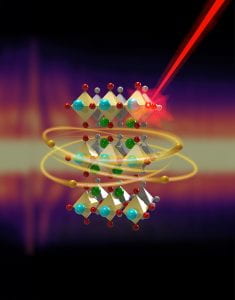Cornell Chronicle Feature on Picosecond volume expansion drives a later-time insulator–metal transition in a nano-textured Mott insulator by Anita in Nature Physics.
 Abstract:
Abstract:There is significant technological interest in developing ever faster switching between different electronic and magnetic states of matter. Manipulating properties at terahertz rates requires accessing the intrinsic timescales of both electrons and associated phonons, which is possible with short-pulse photoexcitation. However, in many Mott insulators, the electronic transition is accompanied by the nucleation and growth of percolating domains of the changed lattice structure, leading to empirical timescales dominated by slowly coarsening dynamics. Here we use time-resolved X-ray diffraction and reflectivity measurements to show that the photoinduced insulator-to-metal transition in an epitaxially strained Mott insulating thin film occurs without observable domain formation and coarsening effects, allowing the study of the intrinsic electronic and lattice dynamics. Above a fluence threshold, the initial electronic excitation drives a fast lattice rearrangement, which is followed by a slower electronic evolution into a metastable nonequilibrium state. Microscopic model calculations based on time-dependent dynamical mean-field theory and semiclassical lattice dynamics explain the threshold behaviour and elucidate the delayed onset of the electronic phase transition. This work highlights the importance of combined electronic and structural studies in unravelling the physics of dynamic transitions and the timescales of photoinduced processes.
